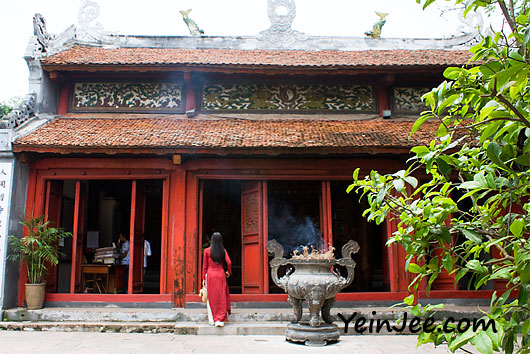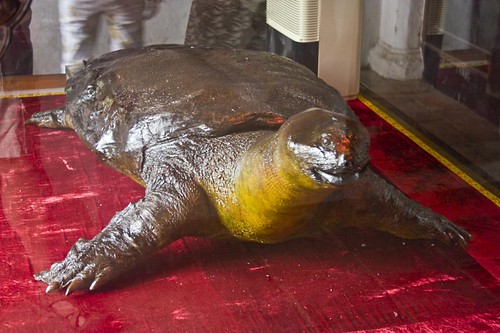Many people believe that such dishes, by inducing sweat, really help lower ones body temperature and help fight the heat. Not everyone feels that way. One cool and refreshing alternative is Pho Cuon, a food similars to fresh spring rolls, but basically different in a number of ways.
The most famous places to find the dish are located on Truc Bach lake,opposite West Lake, Hanoi's largest lake. There are lots of places that offer Pho Cuon around the lake, but the easiest way to find are on Trúc Bạch road, on the north end of the lake, or Tran Vu on the south end.
Pho Cuon consists of a slightly cooked rice paper shell the same thickness as a Pho noodle. Inside this soft shell is a selection of herbs and greens - mainly cilantro, lettuce and mustard leaf - and thinly sliced beef that has been cooked with garlic and generous amounts of pepper. It is served cold with a bowl of fish sauce, boiled water, garlic, carrots, raddish, vinegar, chilli and some sugar for dipping.
Once dipped in the sauce the taste of Pho Cuon contains many of the fundamental elements of Vietnamese cuisine: slightly sweet and spicy but light and fresh. The dish is served cold and has the effect of a hearty salad on one's appetite leaving plenty of room for a few cheeky beers or to try some other delights that many of these restaurants offer like Pho Chien.
Pho Chien is similarily light summer fair; it uses the same rice noodle paper as Pho Cuon but is sliced into squares, stacked, and deep fried. It is topped with the same garlicky beef as well as field cabbage and recommended that one dip it in the Phở Cuốn sauce.
Hours can easily slip by sitting cross legged on bamboo mats as one enjoys the cool breeze of the lake and a few plates of Pho Cuon with friends. Tourists with Vietnam travel guide see a different, more relaxed side of Hanoi, as old men fish and young couples paddle along leisurely in swan boats. It is the ideal place to wile away one's time under the shade of a tree and await the cooling relief of evening.
The Pho Cuon restaurants on Truc Bach are open from morning till about nine or ten at night. The cost for a plate of about ten Phở Cuốn, a plate of Pho Chien, and four beers is just around VND200,000 (US$10). For the relief it offers from the heat, it's a steal.
Source: VOV
 Dau Pagoda - the Cradle of Vietnam Buddhism
Dau Pagoda - the Cradle of Vietnam Buddhism




